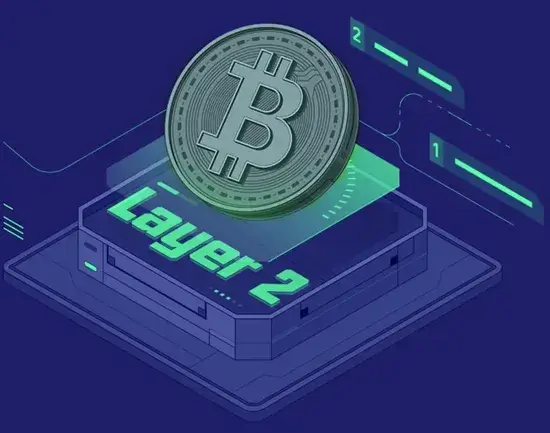The once unthinkable is now underway: Decentralized Finance (DeFi) is making its mark on Bitcoin. For years, DeFi has largely been synonymous with Ethereum and its web of smart contracts, protocols, and decentralized applications. But now, thanks to emerging Layer 2 technologies, Bitcoin is finally entering the DeFi arena—unlocking lending, borrowing, and trading opportunities that were previously out of reach for the world’s most valuable digital asset.
Is Bitcoin ready for DeFi? And what do these new innovations mean for the future of the ecosystem?
Let’s break it down.
Why Bitcoin Has Lagged in DeFi (Until Now)
Bitcoin was never built with DeFi in mind. Designed primarily as peer-to-peer electronic cash, it prioritizes security and decentralization over programmability. Unlike Ethereum, which supports a robust smart contract ecosystem, Bitcoin’s scripting language is deliberately limited.
As a result, while Ethereum exploded with lending protocols like Compound, Aave, and MakerDAO, Bitcoin remained largely sidelined from DeFi.
But that’s starting to change—fast.
Enter Layer 2: The Bridge to Bitcoin DeFi
The recent rise of Layer 2 networks is rewriting the Bitcoin playbook. These solutions operate on top of Bitcoin’s base layer, enabling faster transactions, lower fees, and smart contract capabilities.
Let’s look at the main players leading this revolution:
1. Stacks (STX)
Stacks is a Bitcoin Layer 2 solution that brings smart contract functionality to Bitcoin through its Clarity programming language. Developers can build DeFi apps that settle on Bitcoin, leveraging its security while extending functionality.
Notable Projects:
- Alex: A decentralized exchange and lending protocol offering yield products and collateralized loans, native to the Stacks ecosystem.
- Zest Protocol: Enables BTC holders to earn yield by providing liquidity for lending markets—all secured by Bitcoin’s base layer.
2. Rootstock (RSK)
Rootstock is another smart contract platform connected to Bitcoin through a 2-way peg, allowing users to lock BTC and mint rBTC—a 1:1 representation of Bitcoin on Rootstock. It’s compatible with Ethereum’s EVM, making it easy for developers to port DeFi protocols.
Notable Projects:
- Sovryn: A full-fledged DeFi platform on Rootstock, offering margin trading, lending, and yield farming.
3. Lightning Network + Taro and DLCs
Though traditionally used for fast micropayments, the Lightning Network is evolving. Combined with Taro (which enables issuance of assets on Bitcoin) and Discreet Log Contracts (DLCs), it opens the door for more complex financial use cases, including decentralized lending agreements.
BTC-Backed Lending: A New Frontier
So what exactly does lending on Bitcoin look like in this new DeFi era?
Bitcoin holders can now:
- Deposit BTC on Layer 2 protocols
- Borrow stablecoins or other assets using BTC as collateral
- Earn yield through lending pools or liquidity provision
This replicates the value proposition that Ethereum users have enjoyed for years—but with Bitcoin’s unmatched security and store-of-value narrative as a backbone.
Furthermore, these services are often non-custodial, meaning users retain control of their private keys—aligning with Bitcoin’s cypherpunk ethos.
Why Now? The Catalysts Behind Bitcoin DeFi Growth
Several macro and technological trends are converging to enable this breakthrough:
– Increased Institutional Interest
Institutions are now not just holding BTC—they’re looking for ways to generate returns on idle assets. DeFi lending provides a clear opportunity for yield generation, especially in a low-interest rate environment.
– Ordinals and Inscriptions
While controversial, Ordinals have reignited interest in building on Bitcoin. This attention is spilling over into broader development efforts, including DeFi.
– Ethereum Congestion and Gas Fees
As Ethereum Layer 2s battle for adoption and congestion persists on the mainnet, some developers and users are exploring Bitcoin Layer 2s as alternative playgrounds.
Risks and Limitations
Despite the momentum, Bitcoin DeFi comes with real challenges:
- Smart Contract Limitations: Bitcoin Layer 2s are still evolving and can’t match Ethereum’s rich smart contract capabilities yet.
- Security Risks: Cross-chain bridges and wrapped BTC implementations (like WBTC on Ethereum) introduce potential vulnerabilities.
- Liquidity Hurdles: Without substantial liquidity, lending protocols may face slippage, volatility, and limited borrowing capacity.
Nonetheless, these are the same challenges Ethereum DeFi faced in its infancy—and the pace of innovation on Bitcoin is accelerating.
What This Means for the Broader Crypto Ecosystem
If Bitcoin DeFi succeeds, it could reshape the entire crypto landscape. Here’s why:
- Increased Utility for BTC: BTC will become not just a store of value, but also a productive asset.
- DeFi Diversification: Ethereum won’t be the only DeFi hub. Bitcoin could capture a new segment of users and developers.
- Enhanced Interoperability: We may see multi-chain DeFi applications that natively support both ETH and BTC, unlocking new opportunities for capital efficiency.
Final Thoughts: Is Bitcoin the Next DeFi Frontier?
While Ethereum remains the epicenter of decentralized finance, Bitcoin is steadily carving out its place. Thanks to Layer 2 advancements like Stacks and Rootstock, developers are finally overcoming the technical limitations that kept DeFi out of reach for Bitcoin.
It’s still early days. But make no mistake—DeFi on Bitcoin is no longer just an idea. It’s a movement.
And as new projects bring borrowing, lending, and yield generation to the world’s most secure blockchain, the Bitcoin ecosystem might just be gearing up for its next big chapter.
Maddison Kinsella is a Gen Z crypto commentator and NFT market analyst who brings energy and insight to digital culture. Known for her crisp takes on metaverse trends, DAOs, and creator economy tools, Maddison aims to empower artists and entrepreneurs through blockchain education. She’s also a digital art curator and DAO contributor.










